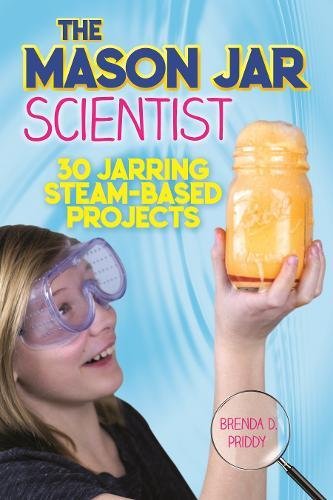Fall is officially here, which means it’s time to break out the pumpkins and make a pumpkin density lab!
And, as we like to do here at STEAMsational, we have to make our fall activities fall STEM activities!
It just wouldn’t be fall if we didn’t bring in the science.
This parts of a pumpkin density column science experiment is one of our favorite fall science experiments yet! We had a blast measuring the density of a pumpkin and finding out which part of the pumpkin was the densest.
Learn how to set up your own pumpkin density lab below!
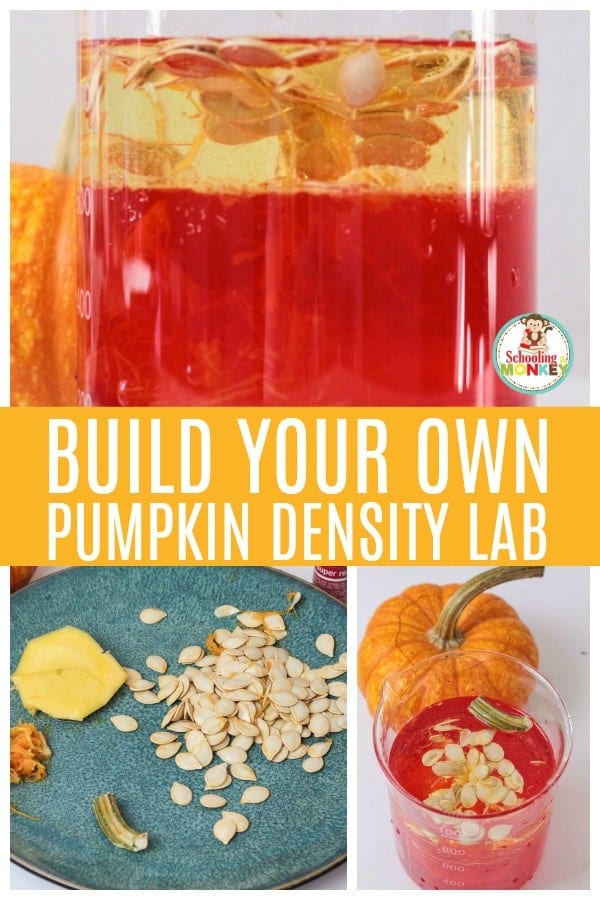
WHY DO FALL SCIENCE EXPERIMENTS?
Kids love learning hands on, and there is no better way to do that than through science experiments.
Seasonal science experiments add another layer of fun on top of the hands-on experience, keeping kids interested using familiar themes and concepts but diving into the science of the things they are most familiar with.
Kids will love this pumpkin density for kids activity because it’s messy, they can learn science, and they get to dive into the inside of a sticky pumpkin. Who wouldn’t love that?
The Science of Density for Kids
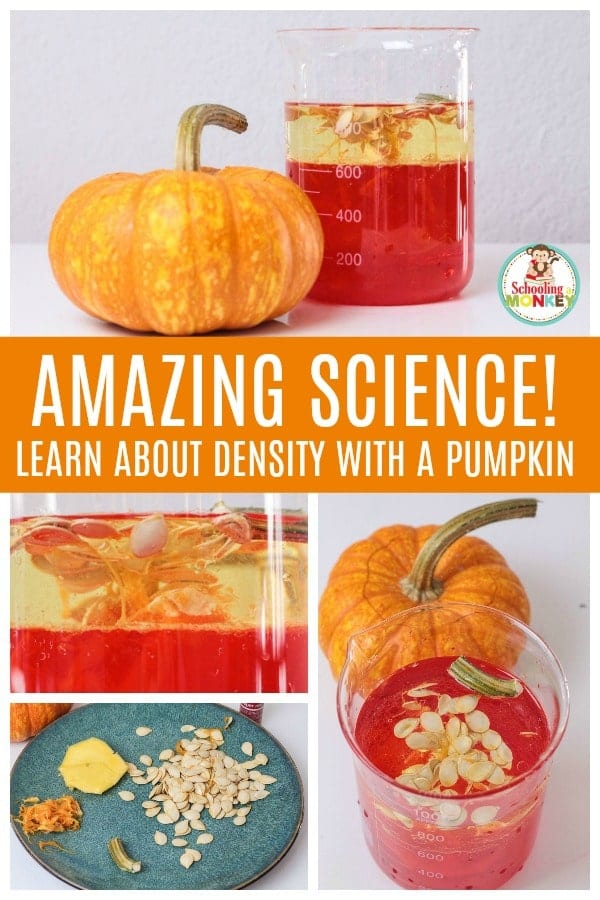
Everything in the world has density. Density is similar to mass or weight, but density in chemistry is defined as:
“the distribution of a quantity (such as mass, electricity, or energy) per unit usually of space (such as length, area, or volume)”
Basically this means how much of the thing is stored in a certain area of space, which is determined by how closely the molecules are packed together.
A common experiment to explore density is to make a liquid density column, but we wanted to take our fall science experiment to the next level.
In this experiment, kids take each part of the pumpkin (seeds, guts, flesh, and stem) and submerge them into a pumpkin density lab to determine which parts of the pumpkin have the most density and which have the least density.
Get the science worksheet to record your results.
WHAT YOU NEED FOR THE PARTS OF A PUMPKIN DENSITY EXPERIMENT
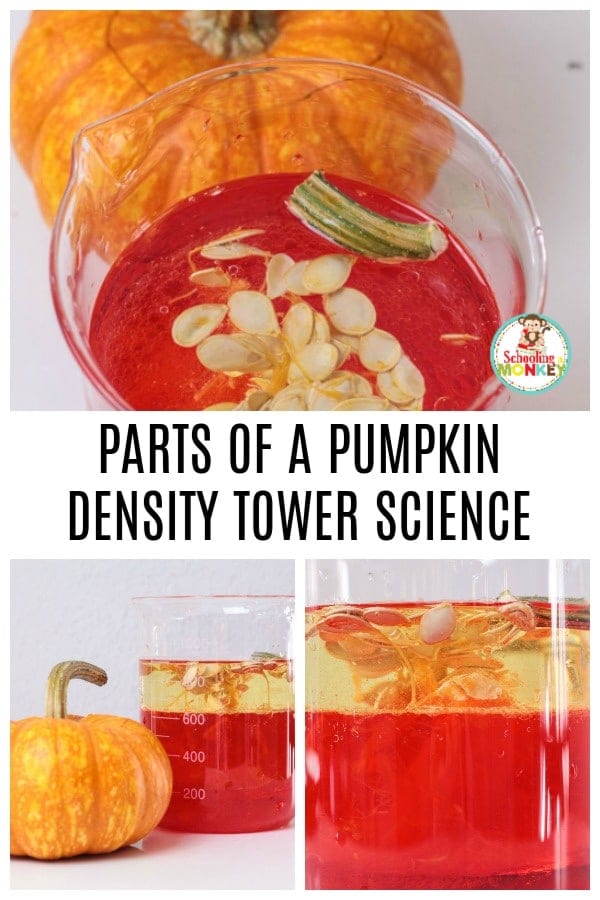
This post contains affiliate links.
You will need:
- Corn syrup
- Water and food coloring
- Vegetable oil
- A small pumpkin (or multiple pumpkins for a large classroom)
- Large jar or beaker
- Spoons
Karo Light Corn Syrup, 128-OunceCrisco Pure Vegetable Oil, 32 Fl Oz
Ball Pint Mason Jar, Regular Mouth, 16 oz (2 Count)
The Mason Jar Scientist: 30 Jarring STEAM-Based Projects
SETTING UP THE PARTS OF A PUMPKIN DENSITY COLUMN
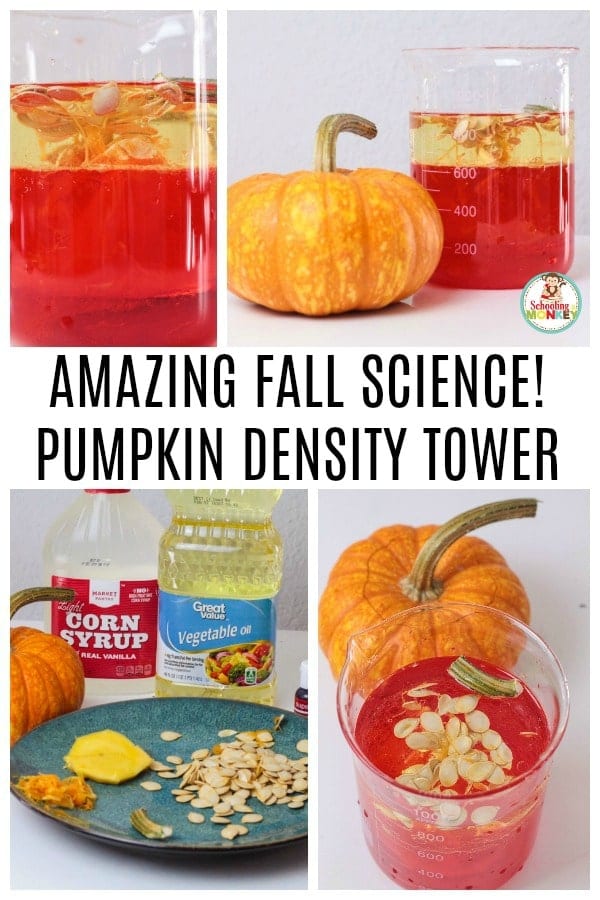
Dye the corn syrup your chosen color. We picked red to match fall colors. Layer the liquids in the jar in the following order:
- 1/3 full of corn syrup
- 1/3 full of water
- 1/3 full of vegetable oil
If you are doing this experiment in a classroom, have a density column for every 4-5 kids to keep things less hectic.
Make sure you select pumpkins with long stems so you can measure the density of the stem as well as the other pumpkin parts.
BUILDING A PARTS OF A PUMPKIN DENSITY LAB
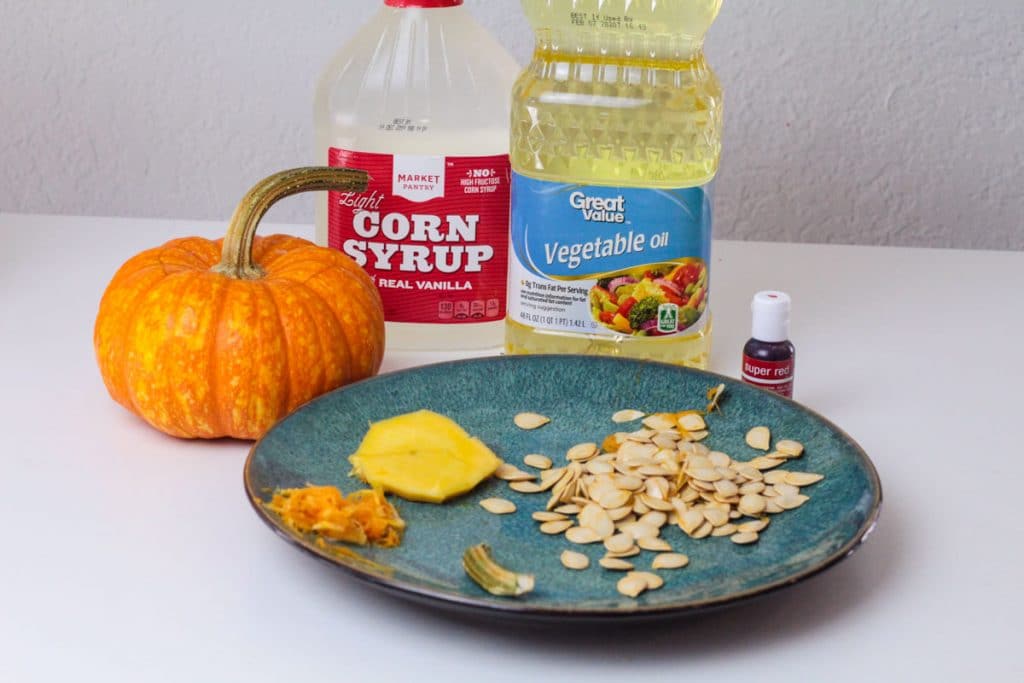
Cut open the pumpkin and remove the seeds and guts. Separate the seeds from the guts.
Cut chunks of pumpkin flesh and set aside.
Cut the stem into pieces.
Use a spoon or fork to push each part of the pumpkin to the bottom of the density jar.
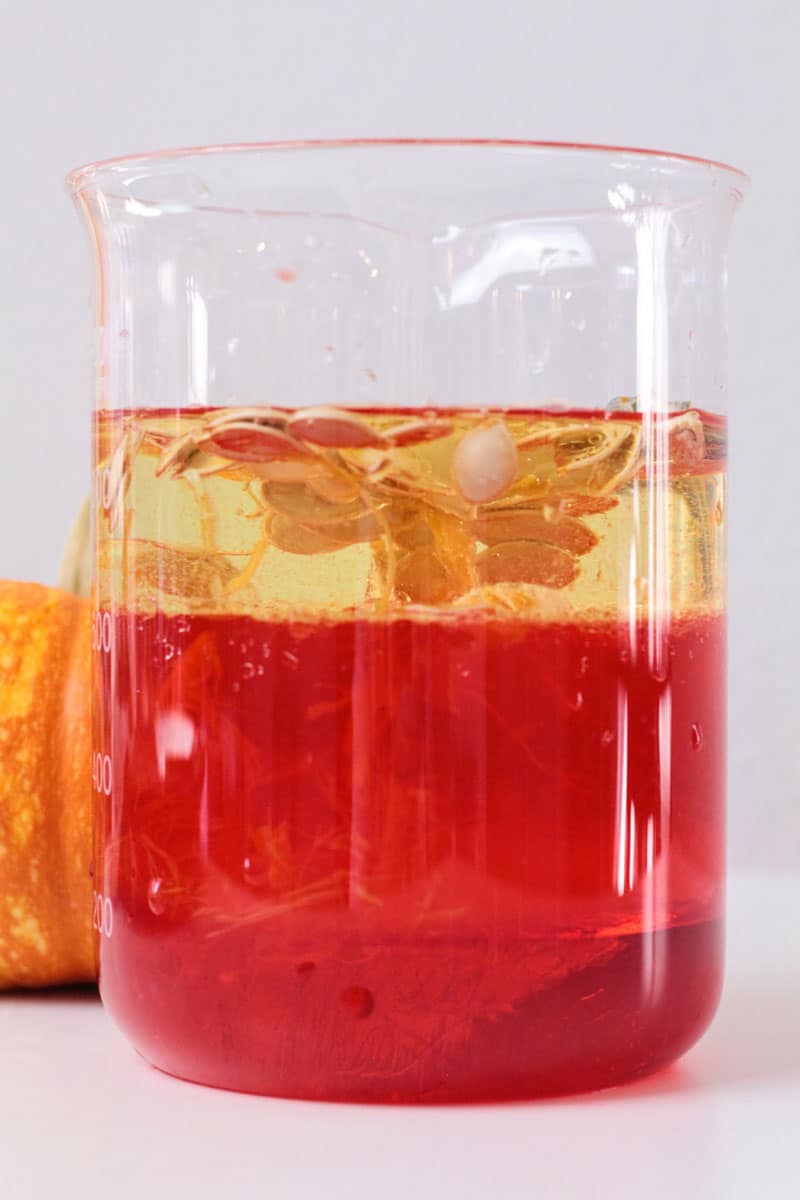
Watch as the pumpkin part rises according to its density.
In our experiment, the pumpkin flesh lingered at the corn syrup level, the guts hung out in the water, the seeds drifted between oil and water, and the stem was the least dense and floated on top of the oil!
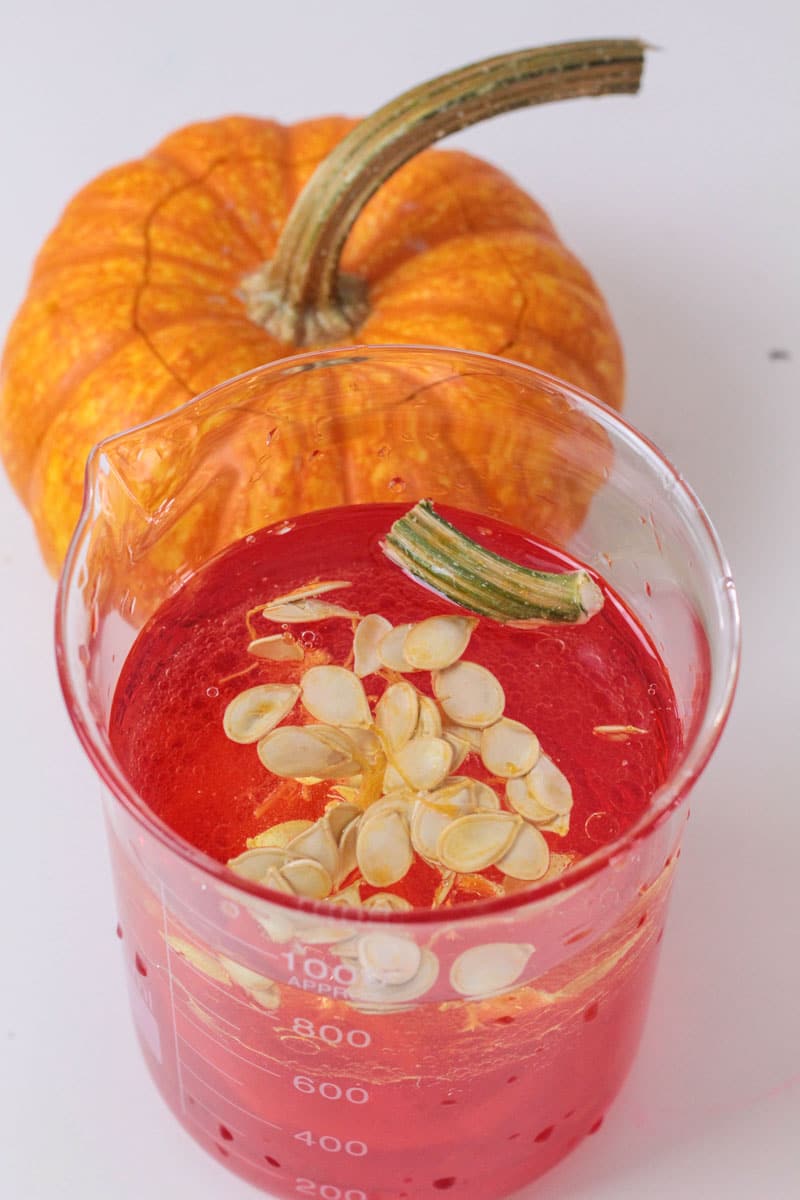
Record your experiment data in your science worksheet or notebook.
Did all pumpkins have the same density level, or were some different from others?
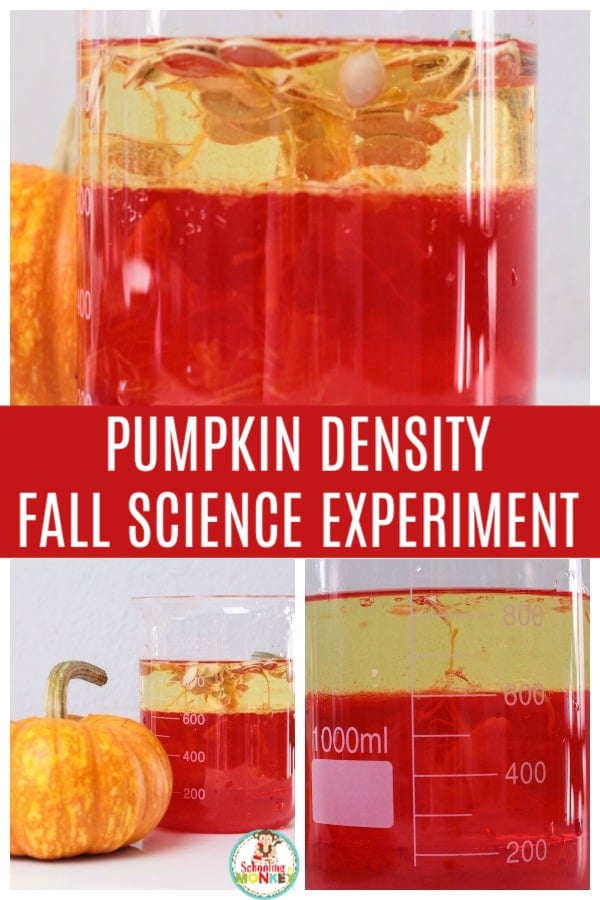
MORE PUMPKIN ACTIVITIES FOR KIDS
Want even more fall science and STEM?
Get the fall STEM challenge cards!




